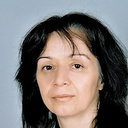Hyperhidrosis, bromhidrosis, and chromhidrosis: Fold (intertriginous) dermatoses.
Kľúčové slová
Abstrakt
Human sweat glands disorders are common and can have a significant impact on the quality of life and on professional, social, and emotional burdens. It is of paramount importance to diagnose and treat them properly to ensure optimal patient care. Hyperhidrosis is characterized by increased sweat secretion, which can be idiopathic or secondary to other systemic conditions. Numerous therapeutic options have been introduced with variable success. Novel methods with microwave-based and ultrasound devices have been developed and are currently tested in comparison to the conventional approaches. All treatment options for hyperhidrosis require frequent monitoring by a dermatologist for evaluation of the therapeutic progress. Bromhidrosis and chromhidrosis are rare disorders but are still equally disabling as hyperhidrosis. Bromhidrosis occurs secondary to excessive secretion from either apocrine or eccrine glands that become malodorous on bacterial breakdown. The condition is further aggravated by poor hygiene or underlying disorders promoting bacterial overgrowth, including diabetes, intertrigo, erythrasma, and obesity. Chromhidrosis is a rare dermatologic disorder characterized by secretion of colored sweat with a predilection for the axillary area and the face. Treatment is challenging in that the condition usually recurs after discontinuation of therapy and persists until the age-related regression of the sweat glands.


